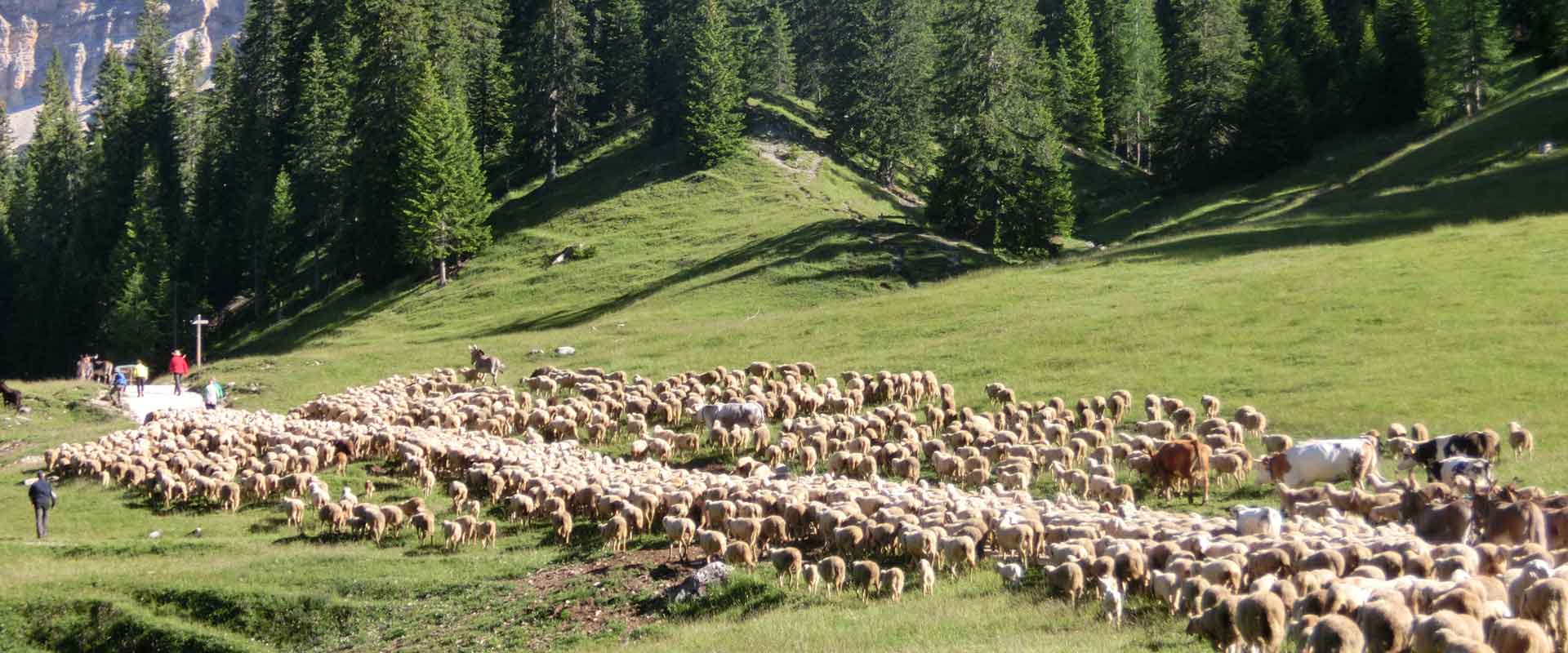MENU


The ninety years under the rule of Venice (until 1511) were marked by long and expensive trials over grazing rights between the two most important Regole - the "high" ones of Lareto and Ambrizola -, by disagreements with the captain of Botestagno, by endless disputes over the borders with Marebbe, by violations of the rights of joint ownership of the pastures caused by several sales contrary to customary rules. Nonetheless, the Regole succeeded in strengthening their position by removing all violations and updating the Laudi.
During the Venitian rule, the so called "low" Regole were created for a better management of dairy cattle pastures. These associations occupied, at the expenses of the High Regole, the grazing belt bordering on the valley floor.
On 18th October, 1511, the troops of Emperor Maximilian of Hapsburg conquered the Castle of Botestagno, the small fortress located at the northern entrance to the Ampezzo valley. On 21st October, the Emperor was in Ampezzo and ordered the family heads to formally subject. They paid the emperor their respects while beseeching and obtaining confirmation of the statutes of Cadore, already ratified by Venice. The earliest document recognizing the Statute, the Laudi and the rules of Ampezzo got lost. As many as 14 other documents followed until 1792, by which the Ampezzo people were reconfirmed their privileges by the Emperor or the Archduke of Tyrol. Ampezzo was officially given to the Austrian Empire by the treaty of Worms in 1521.
Under the Austrian rule, Ampezzo maintained both its independence and the rules ratified by the Laudi, concerning the ownership and management of forests and pasturelands. The common forests in the areas bordering with Dobbiaco, San Vito and Auronzo di Cadore, were the cause of a number of disputes, controversies and endless trials. The first border was set with Dobbiaco in 1536, whereas over two hundred years elapsed before the borders with Auronzo and San Vito were eventually set. There were, instead, fierce disputes between the Regola di Lareto and the Austrian captains of Botestagno over the forests and pastures surrounding the fortress. The controversy led to two trials whose issues were unsuccessful for the Regolieri of Lareto, who were able to repurchase the lands from the Austrian state only in 1789. The 18th century was one of stability and peace for the Regole. In the land register of 1755 , known as Catasto Teresiano, the property of the forests was allotted to the Community, whilst the Regole owned the pasturelands , but were entitled only to grazing rights in the forests. The Regolieri did not realise the mistake, perhaps because the Community was still one with the historical Regola of the valley floor and was considered only for its function of managing the alodial estate of the Regolieri.
In 1853, the Empire ordered the cancellation of grazing and firewood gathering rights. The law was ignored in Ampezzo until 1870, when a few "progressivists" appealed to it in order to advocate that the Regole were to be assimilated by the Municipality. A first request was submitted to cancel the promiscuity between the Regole and the Municipality. Priests don Pietro and don Isidoro Alverà succeeded in stopping the dangerous trial. Since 1848, in fact, the Commune of Ampezzo had become a public body, and its head was to swear allegiance to His Imperial Majesty Franz Joseph I. In 1885, the Regole were officially recognised by the Austrian State, and during the "Meeting between the Magnifica Comunità d’Ampezzo and the so-called Regole" of 1887, the rights of the Regole were put down in writing and the ownership of the Comunità d’Ampezzo was established.
During the first World War, the entire Ampezzo frontline stood on the lands of the Regole. The whole area suffered serious damage by heavy shelling and the cutting of numerous trees. The Osteria of Ospitale belonging to the Regola Alta of Lareto was destroyed by grenades. At the end of the war, Ampezzo became part of the Reign of Italy and since 1923 has been part of the Belluno Province. In 1927, a law to reorganize civic uses was issued. This law would completely ignore the Regole. In 1936, the Regole started a long law suit to obtain the recognition and assignment of their historical heritage.
After the second World War, the law on civic rules was still in force; hence a petition was filed to the Ministry of Agriculture and Forests. The petition advocated that the1927 law could not apply to the Regole, special associations of a private kind. A committee sent by the Ministry to examine the matter rejected the appeal and ordered the cancellation of the promiscuity between the Regole and the Municipality.
By the resolution of 7th January, 1947, the Town council declared their willingness to acknowledge the historical rights of the Regole, cancel the promiscuity and grant the ownership of the lands. Waiting for a conclusive settlement, the Regole and the Town council consociated for the temporary technical and administrative management of the agricultural, sylvan and pastoral properties in a special Association known as ASCoBA. The case ended only in 1959, with the transaction: i.e., the cancellation of the promiscuity and the equitable distribution of forests and pasturelands between the Regole and the Municipality.
In 1962, when the historical ownership was restored, the Regole issued a new Laudo. The law on the mountains of 1971 legally acknowledged both the single Regole and the new Comunanza of the Regole. In the last thirty years, new state and regional laws have acknowledged the importance of the Regole, as an association able to manage the preservation and safeguard of natural resources as well as of the historical and cultural heritage. The law issued by the Veneto Region in1990, decreed the creation of the Park of the Ampezzo Dolomites over part of the territory of the Regole; the park is directly managed by the Comunanza of the Regole d’Ampezzo.